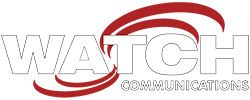Internet of Things
The Internet of Things
In the early 1980s, programmers in the Carnegie Mellon University Computer Science Department solved a problem that plagued them for years: getting to the Coke machine and either finding it empty or recently loaded so the drinks hadn’t had time to get cold. What they developed was the first machine connected to the Internet to provide information about its inventory. What stemmed from the programmers’ need for caffeine become known as the Internet of Things (IoT), in which everyday and common machines are connected to the Internet to send and receive data.
Today, everything from coffee machines to ovens to large farm equipment can be connected to the Internet and monitored on computers, tablets, and phones. A growing sector of IoT is agriculture, and Watch Communications works with agricultural companies to extend IoT to farmers across the country. Healthcare, especially telemedicine and care for seniors, are strong sectors for IoT growth.
Wabash Heartland Innovation Network (WHIN) Partnership
Watch Communications and the Wabash Heartland Innovation Network (whin.org) are partners in developing the largest rural broadband Internet testbed in the nation. WHIN is a consortium of 10 counties in Northwest Indiana devoted to working together to fuel prosperity by harnessing the power of internet-enabled sensors to develop the region into a global epicenter of digital agricultural and next-generation manufacturing.
Watch Communications was selected in 2019 to design a unified network for WHIN’s 10-county area. Additionally, Watch and WHIN have partnered to build an IoT network to provide the needed communications to various sensors specifically for precision agriculture and agriculture. Initial uses include Weather Stations, Asset Tracking, Water Management, Propane Tank Monitoring, Grain Bin Monitoring, Pivot Irrigation, Waste Bin Monitoring, and Leak Detection.
The IoT gateways are designed to wirelessly connect devices to a regional LoRaWAN wireless network, and the technology will allow areas throughout the region to deploy internet-based sensors for agriculture, manufacturing and Internet of Things devices along with the capability to retrieve the data obtained by the sensors.
